Ford originally planned to return to Le Mans last year with a Mustang.
To mark 50 years since the GT40 placed 1-2-3, avenging Enzo Ferrari’s refusal to sell to the Blue Oval, it wanted to beat the Ferrari 488 GTB and others in the top-tier, production-based LM GTE class. With a muscle car.
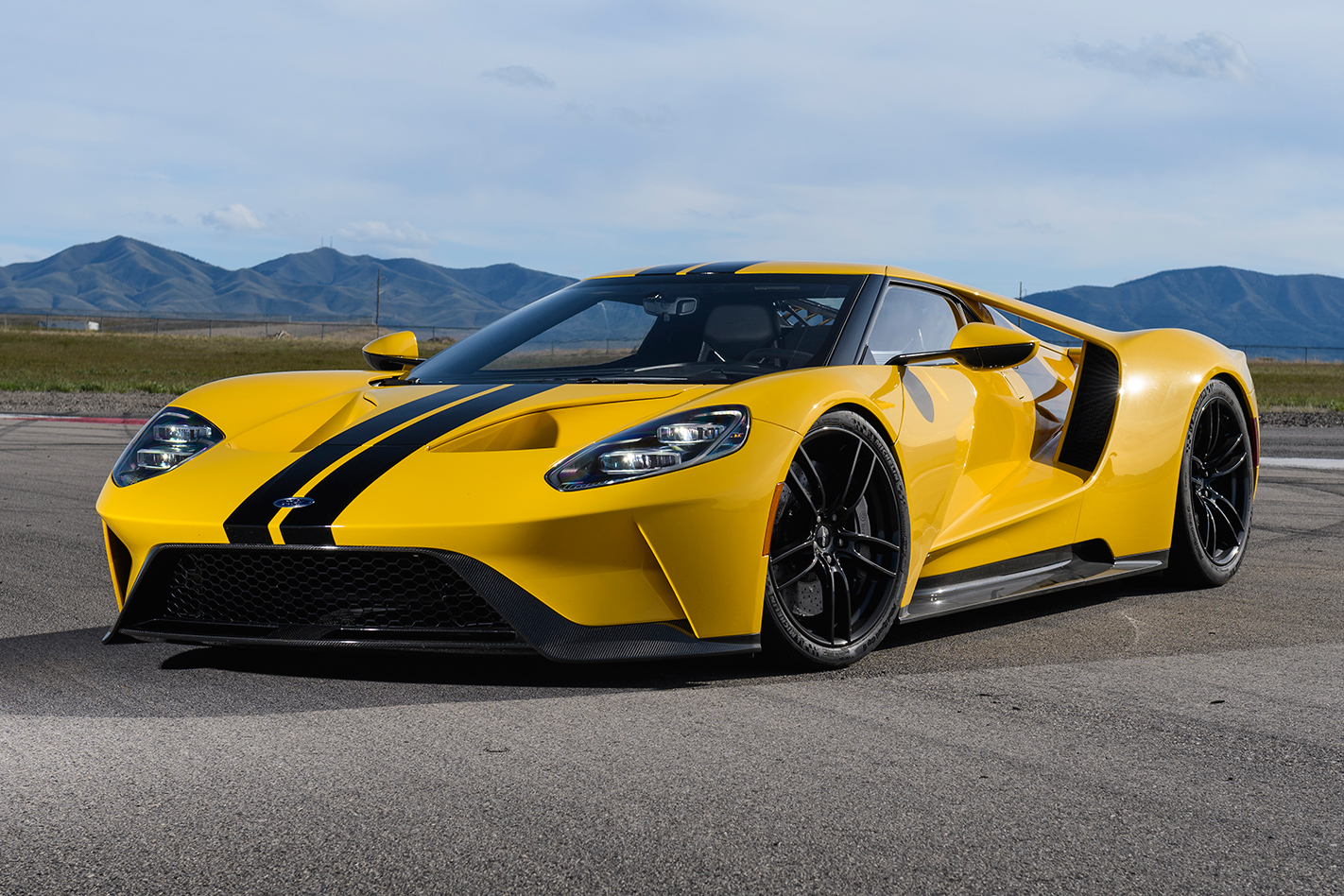
Then, as Pericak tells it, a ‘skunkworks’ team was set up without the knowledge of top brass; a team of 20 or so working in secrecy in the basement after-hours and during weekends – this all sounds too perfect to be true, but it’s a nice story – working on an actual modern-day GT40 to win LM GTE, and both showcase and develop technology with wider applications for Ford’s range.

Led by design director Craig Metros, the team eventually settled on all three, and the result is a carbonfibre-bodied design that’s both highly evocative of the original GT40 but adds a modern, technical twist, including those ‘floating’ buttresses that channel air down the car’s pinched body sides – and channel air inside them, from the intercoolers to the engine intake. Gorgeous.
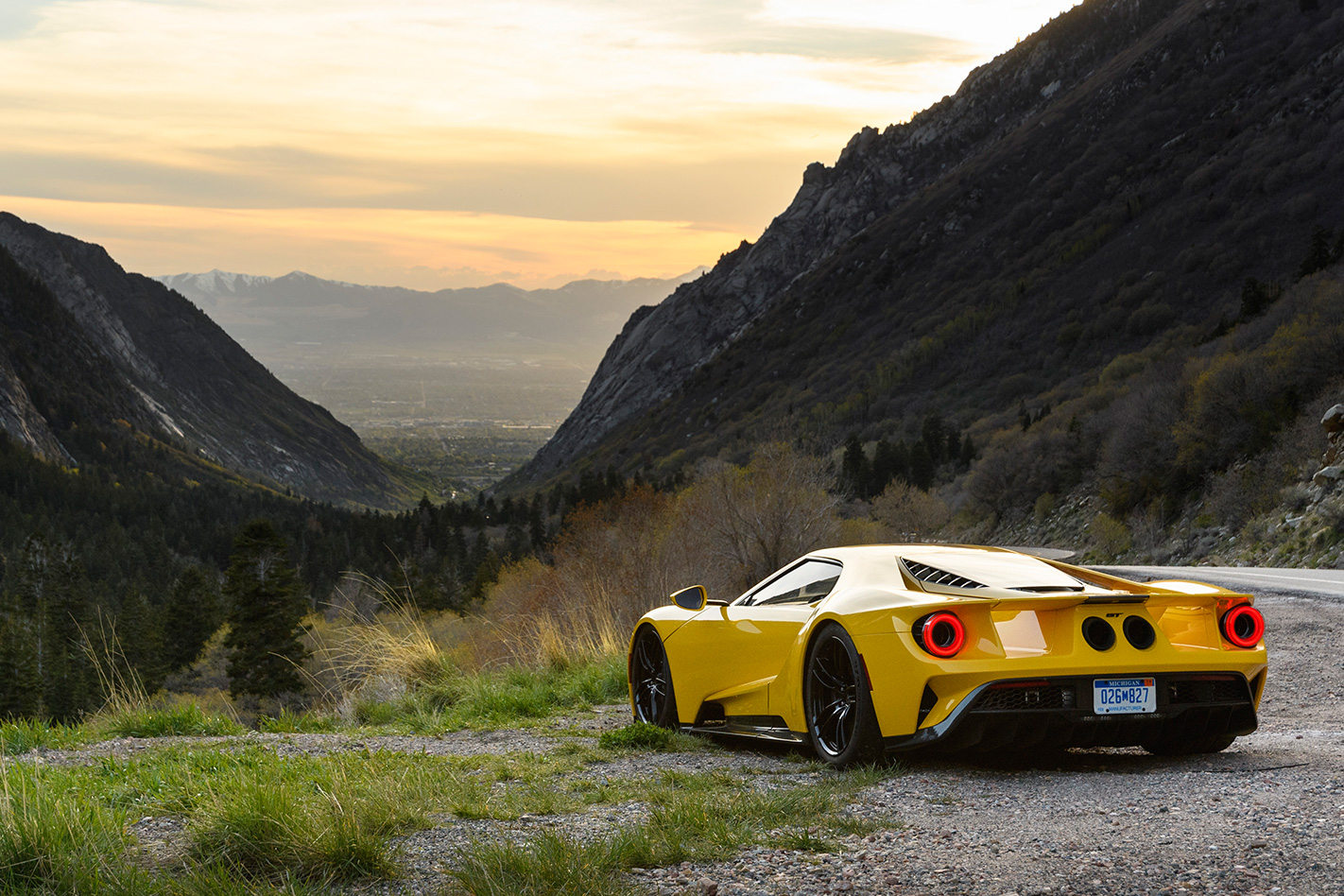
That Ford started fresh with a clean-sheet design is crucial: while its rivals converted road cars into racecars, with all the compromises that involves, Ford was busy crafting the perfect race car that they’d turn into a road car later, with all the compromises that involves.
All this means the GT’s ingredients are far more exotic than a Porsche 911, Ferrari 488 GTB or Aston Martin Vantage. In fact, the Ford GT is redolent of a ‘budget’ LaFerrari, as far as you can call it budget at around A$500,000 before taxes, or about the price of a Lamborghini Aventador S in the US. Even so, a vetting process and requirements not to sell the car for a couple of years – and to give Ford first refusal when owners do – hasn’t stymied demand.

The instrument panel forms an integral part of the structure, and the rollcage is built directly into the monocoque, its bones disguised by trim in the road car but requiring only bolt-on components to transform into the racecar’s full cage.
Double wishbone suspension reaches deep into the centre line of the chassis, cleaning up the airflow beneath the car to create a ‘keel’-style front end. It’s also why the GT has a turning circle to shame a Focus RS.
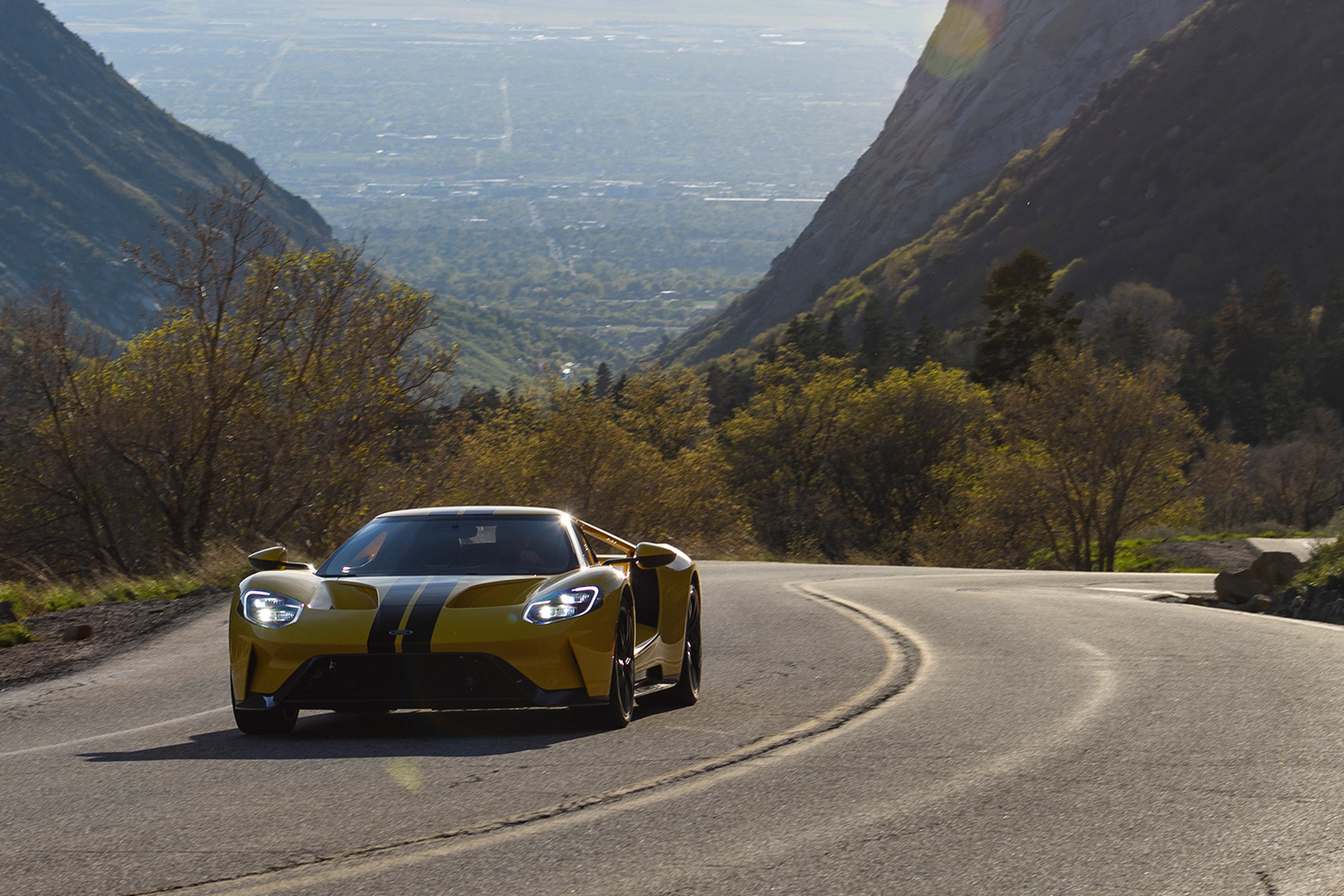
A 3.5-litre twin-turbocharged V6 Ecoboost engine is mounted behind the driver, connected to a seven-speed dual-clutch gearbox, 482kW and 746Nm going to the rear wheels alone.
Press the starter and there’s a raucous, race car whirr of fuel pump, and the GT fires with a gruff, deep idle. It’s a V6 so it isn’t as tuneful as a Lamborghini or Ferrari, but it is compact and that’s also key to the GT’s tapered, slippery bodywork. Sixty percent of the dry-sumped unit is shared with the Ford Raptor and when you blip the long-travel throttle the revs respond hungrily, with none of the turbo-induced sogginess you feel in – niche but relevant reference, here – the Radical RXC Turbo, another road car that looks like a Le Mans car and uses an Ecoboosted V6.
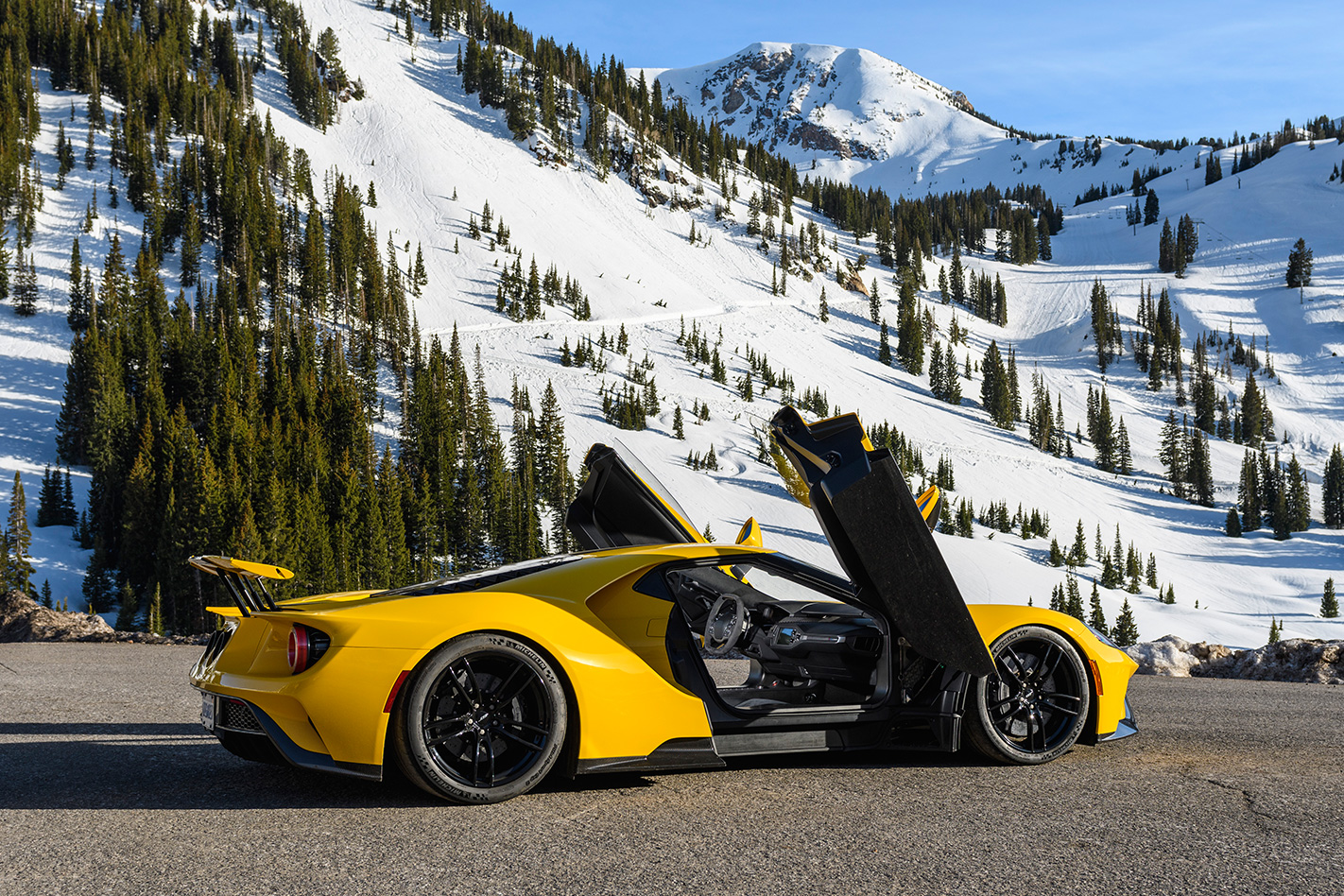
When you do, you slot into low-slung seats fixed directly to the floor (though they do recline), allowing the chassis to taper aggressively ahead of you and provide that small frontal area; the seat bolsters squash right up against the chassis.
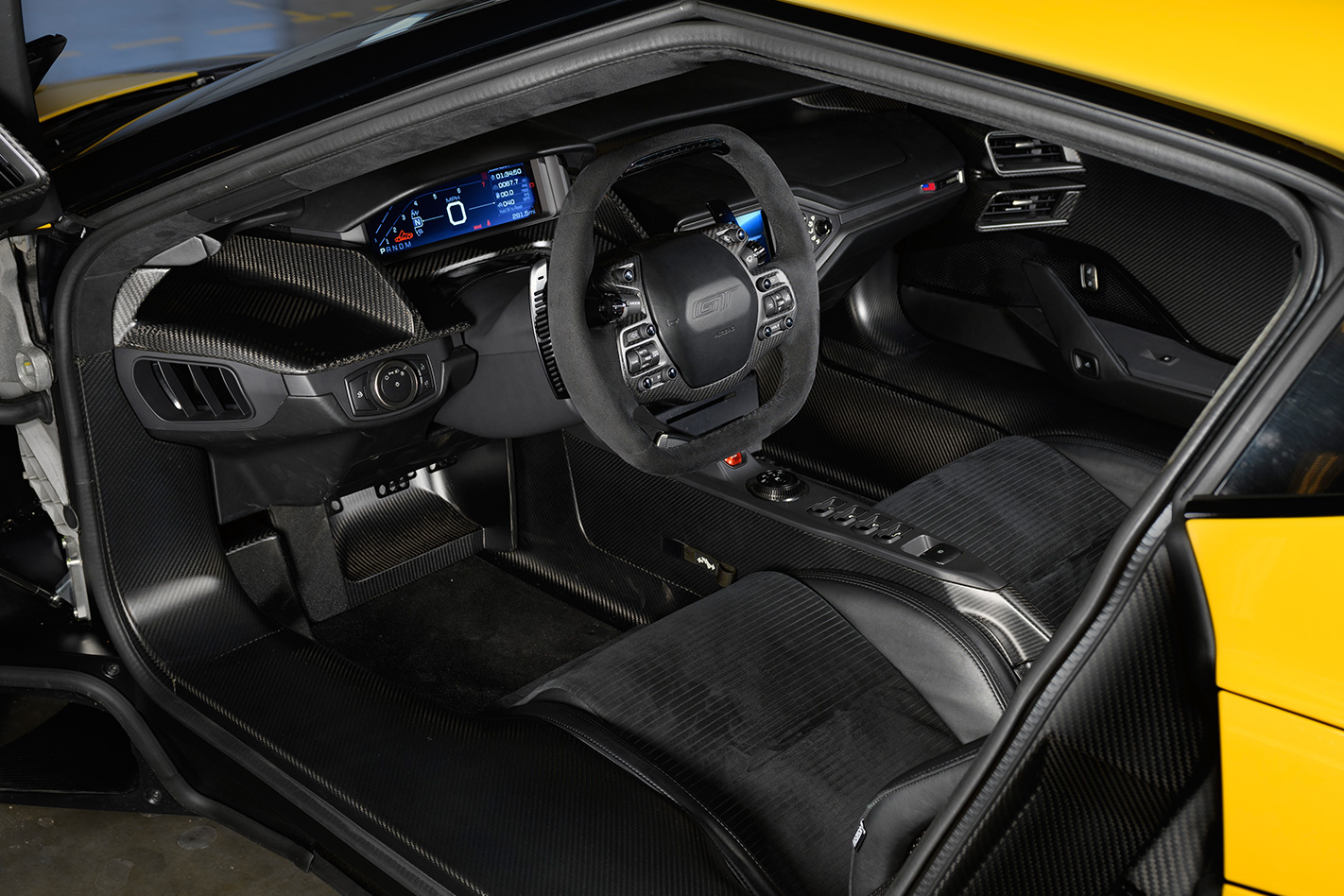
Before the launch, Ford asked if we were taller than 185cm, because we might need a special helmet if we were. I’m 185.5cm, guessed I’d be okay, but it’s pretty marginal in here, a few centimetres spare without the helmet; lid on, I have to lean the seat back a little to cheat the space. An instructor sits alongside, and we brush shoulders it’s so narrow in here. With unlacquered carbonfibre everywhere, it’s a dark, functional, weapons-grade kind of interior, one that raises excitement and trepidation in equal measure.
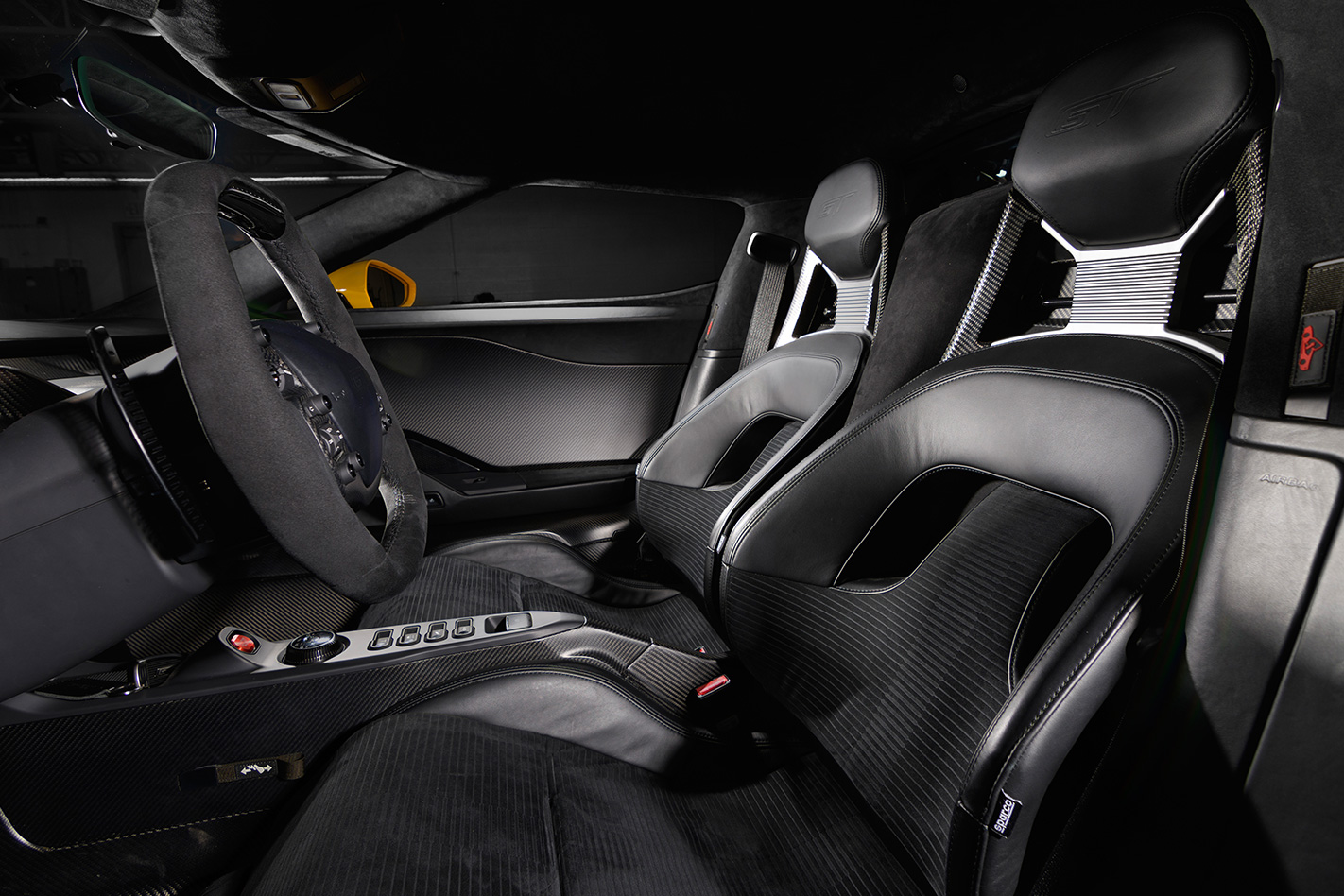
But in Track, the pushrod compresses, the car drops and the coil spring is locked out by a hydraulic actuator, becoming squashed and solid, not long and – technical term – springy, leaving the torsion bar to absorb bumps. The pushrod also acts on DSSV (Dynamic Suspensions Spool Valve) dampers, but they’re hidden away at the front of the cockpit and feature three settings. Unusually, this means that both spring and damper rates adapt on the fly to suit each other, where normally a fixed-spring rate must work with multiple damper rates, a compromise.
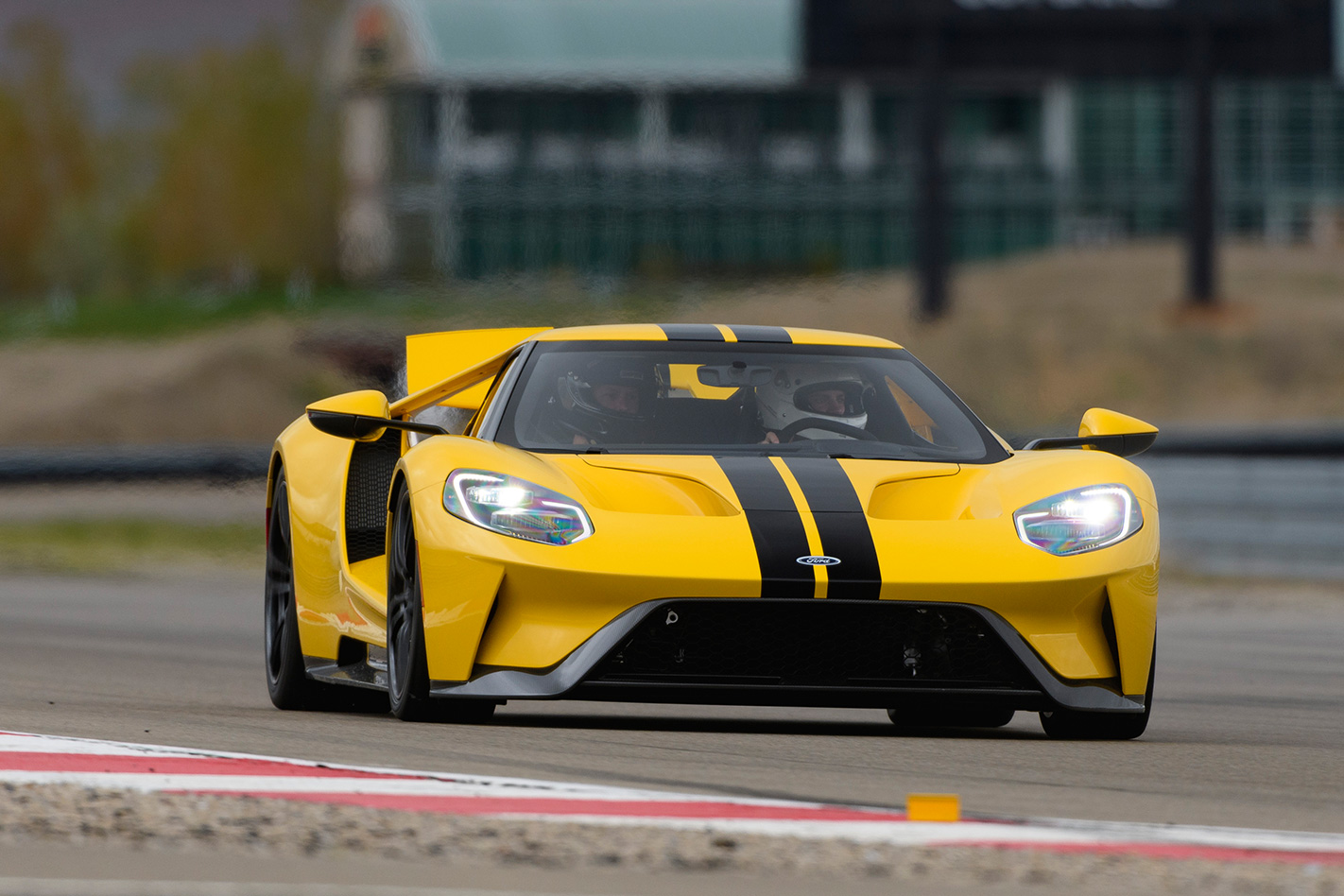
It hauls robustly from low revs, feels eyes-on-stalks alert at the front, and steers with a hydraulically assisted rack that’s swift without nervousness, physically meaty without excessive weight. With the spring rate doubled, there’s very little bodyroll, yet still a high degree of compliance to soak up kerbs. You notice the slight fuzz to the brake pedal just before you clamp pads to huge 394mm carbon-ceramic front discs, and that the gearshifts are quick but lack the mechanical snap you get with a Ferrari or a Porsche. But you’re comfortable, ready to attack.

Figures be damned, because on track the GT feels mighty quick, and Ford claims it beat the McLaren 675LT it benchmarked on every track it tested on. Despite peak torque listed at a heady 5900rpm, the torque curve is flat from 4000rpm, and the GT pulls hard from under 3000rpm, kicking again at 5500rpm for a firework-like warp to the 6500rpm redline on a long, energetic spike of boost.
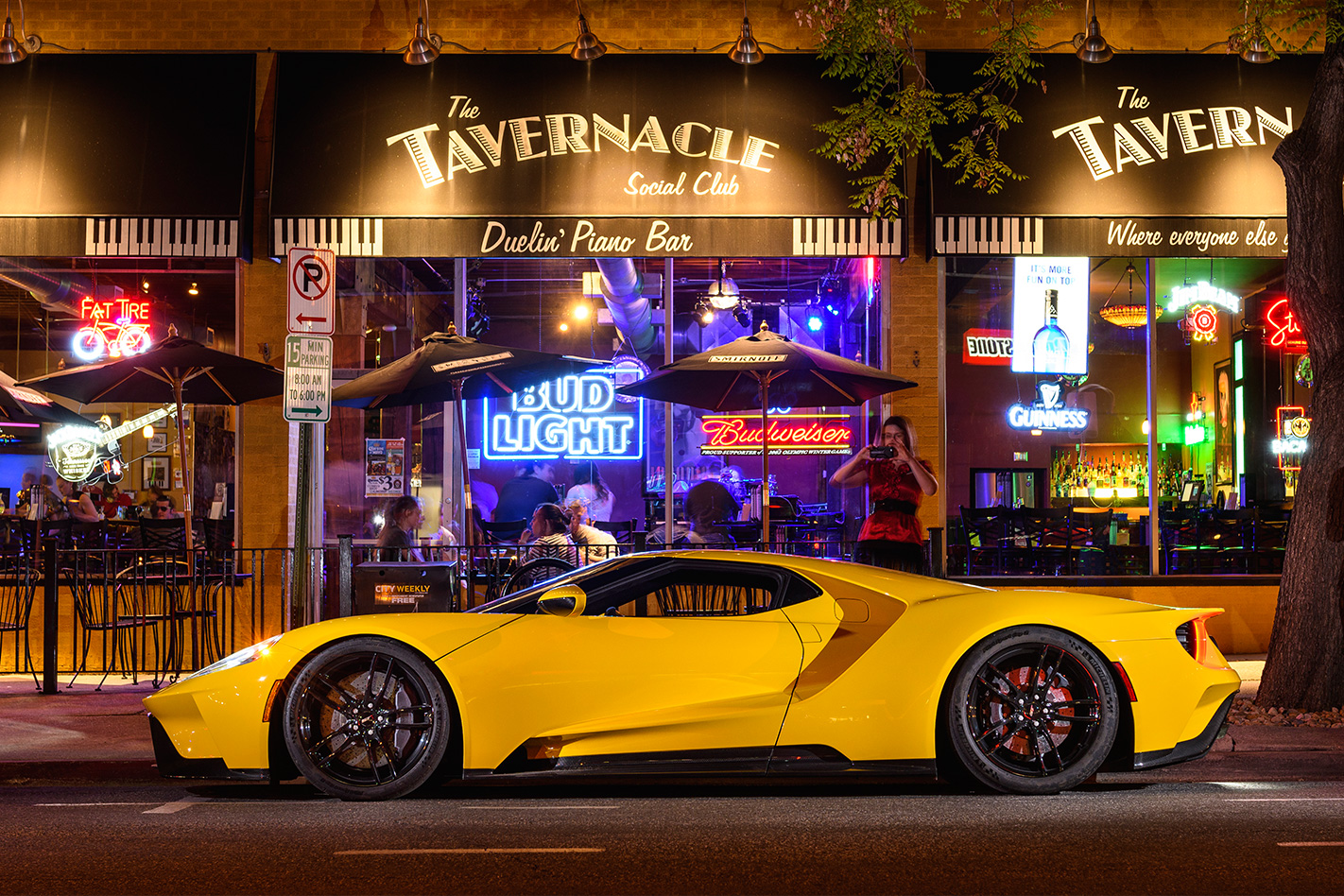
Soon you build the confidence to push harder, and start to get a handle on how high the grip limits of the Michelin Pilot Sport Cup 2 tyres are, that you can lean on them hard, tip-toeing on the finely defined limits as the fronts eventually start to bleed into slight understeer. It feels very rear-biased, so you have to be progressive with the throttle out of corners, but there’s still a lot of traction. And when you stand on the brakes, it’s your nerve that wimps out before they do. Get it wrong and the stability control is perfectly calibrated.
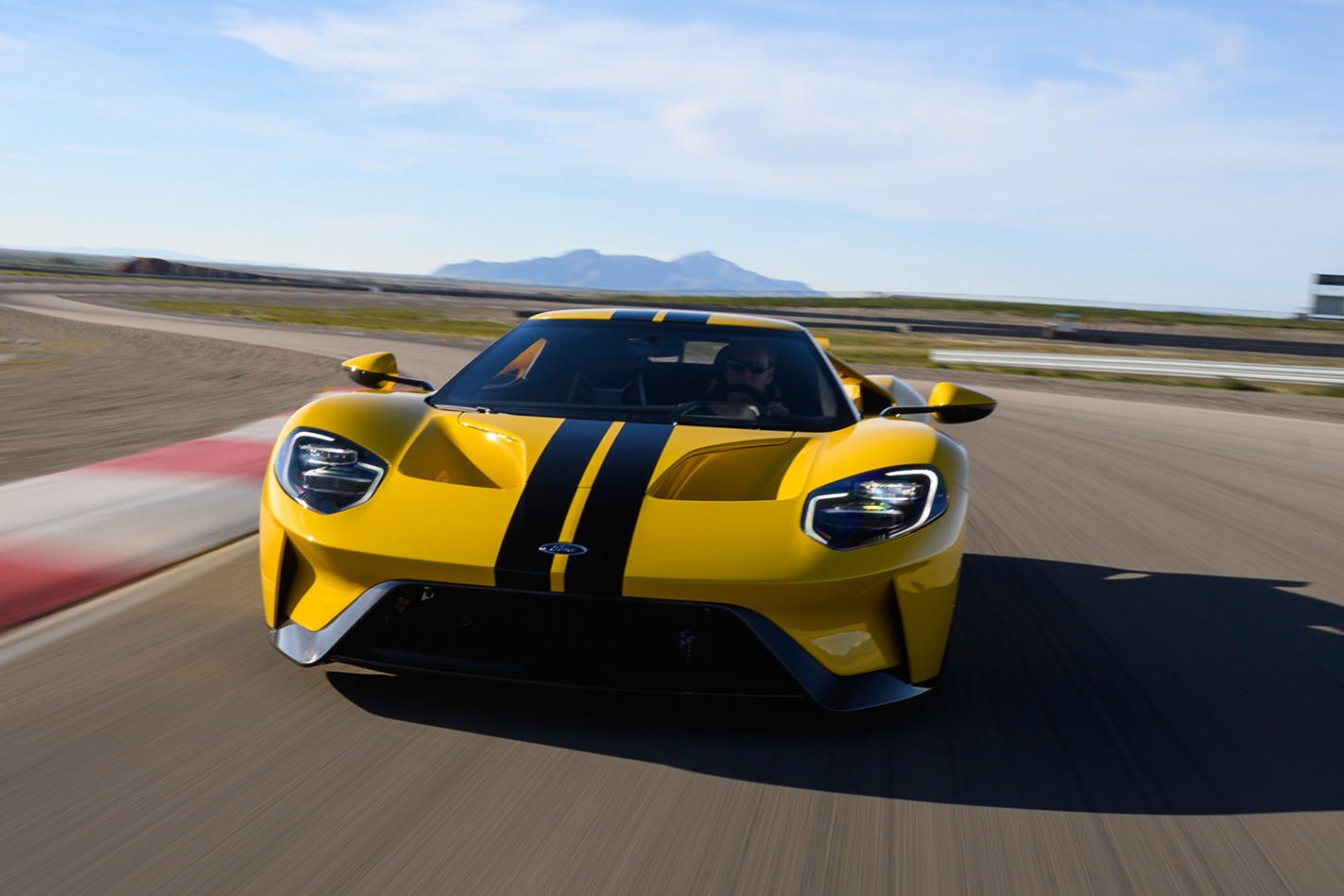
No, where the Ford GT falters is on the road, as you might expect given the racecar origins. It’s still exciting, its suspension is still wonderfully compliant, and it still flows down a tricky Utah mountain road with speed, poise and huge competence. People also whoop involuntarily when they see you. But you do notice that, while it’s very quick, the GT’s not quite got the straight-line legs of the fastest supercars.
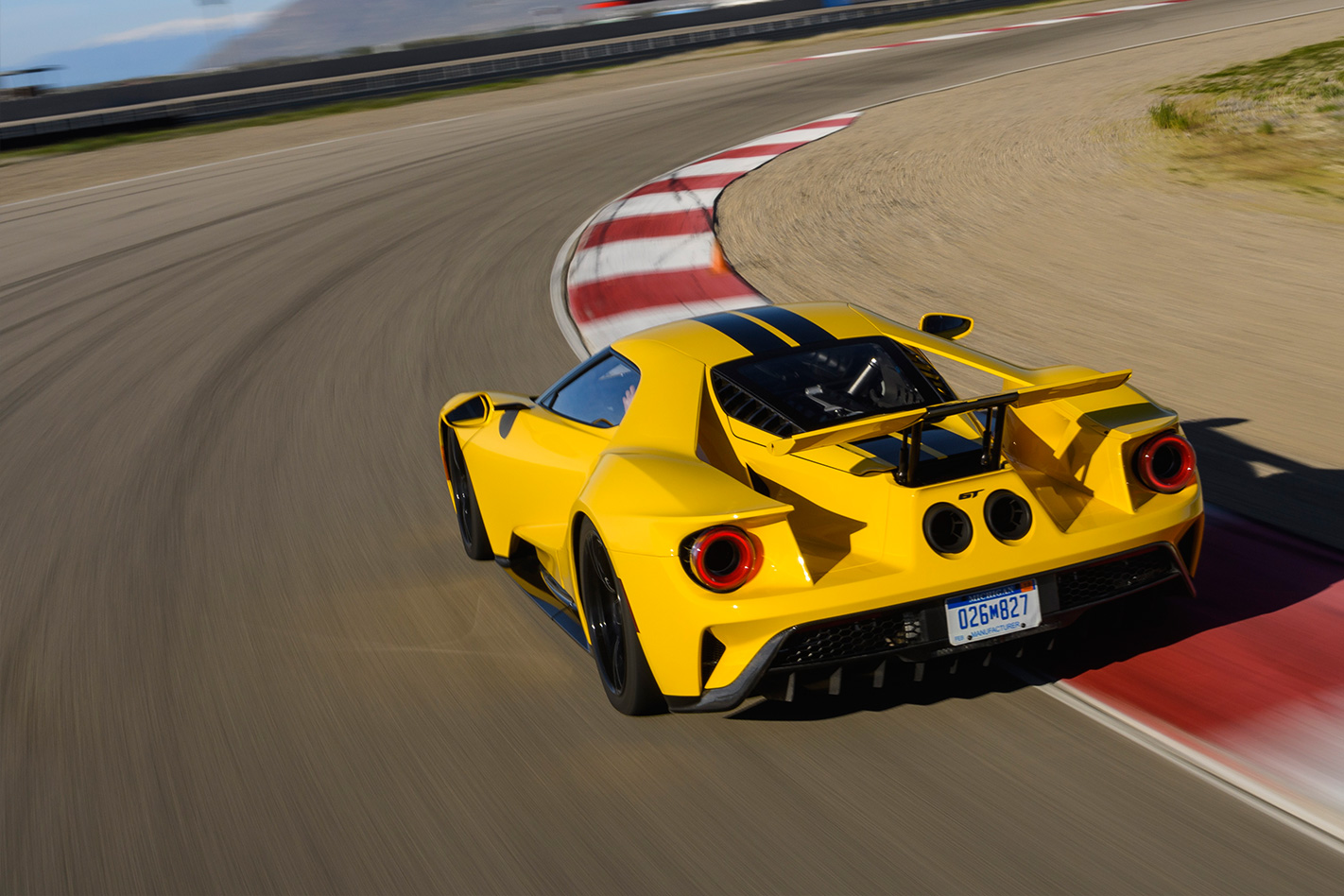
Part of the GT’s racecar-with-numberplates appeal? Maybe, but I’d say it’s part of the compromise that comes from engineering the racecar first, and I bet you could round off all the rough edges and create a car that’s even more enjoyable to drive on the road. I go back to the track, slightly disappointed, then pull more laps and fall in love all over again.
The GT’s a brilliant track car, no doubt about it, and its engineering is so innovative, it’s no wonder the racecar was so dominant it had to be restrained. But half a century on, Ferrari and its rivals still do it better on the road. Ironically given Ford’s blue-collar heritage, they do it for less cash, too.






